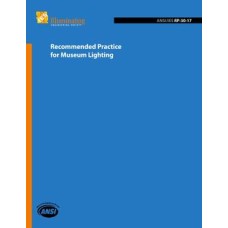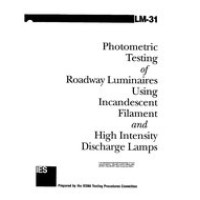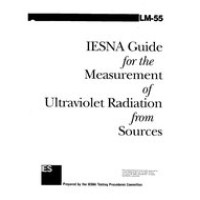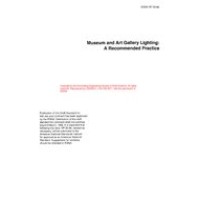IES RP-30-17
- Recommended Practice for Museum and Art Gallery Lighting
- standard by Illuminating Engineering Society, 01/09/2017
- Category: IES
$85.00
$43.00
Museum and art gallery lighting design differs from any other type of lighting design because museum objects are unique and many are extremely sensitive to harm from light. The key to damage prevention is environmental control: elimination of atmospheric pollution, stabilization of temperature and humidity, and minimization of exposure to radiant energy. This Recommended Practice, intended primarily for the lighting designer, provides specific standards for satisfying the special requirements of museums and art galleries. Other decision makers, such as the museum administrator, the curator, the conservator, and the exhibit designer, can use this Practice to improve understanding and communication throughout the exhibition process.
This Practice covers museum and art gallery lighting from a dozen perspectives: successful museum lighting introducing the concept of team decision making; design guidelines melding artistic basics withkey technical considerations; damage to museum exhibits revealing why light causes deterioration and what can be done to minimize the effect; four typical lighting problems categorizing most display situations and the best methods to handle them; architectural aspects and daylight explaining how daylight "presence" can best be used; electric light sources describing the best and worst features of incandescent, fluorescent, and HID lights; luminaires and accessories concentrating on track lighting but also discussing recessed fixtures, pendant fixtures, and fiber optics; light controls explaining when to use manual switches or programmed systems; control of glare examining direct glare, reflected glare, and excess contrast; measurements and measuring instruments describing current techniques and equipment choices; lighting calculations presenting the accepted methodology with worked examples; and maintenance and budgets giving a comprehensive maintenance checklist and a sample database that costs out the lighting for a single large gallery. An extensive glossary defines both lighting and architectural terminology.
Because museum and art gallery lighting design is attributed here to a collaboration between art and science, success depends upon team decisions. Decisions that must satisfy a diverse range of interests, expertise, and professional pride. Therefore, a systems approach to lighting design is advocated throughout this Practice. For example, artifact placement (relative to conservation needs) can greatly affect overall illumination levels, the curator's intended message, and the physical layout of the museum/gallery. Therefore, the impact of lighting on museum occupants, artifacts, and the environment must be jointly considered. [Note: RP-30-96 is a "trial use" American National Standard.]
 PDF
PDF
All of our standards document are available in PDF (Portable Document Format), an electronic, downloadable format.You will be able to download the file in your account downloads.
 Multi-User Access
Multi-User Access
After purchasing, you have the ability to assign each license to a specific user.
 Printable
Printable
At any time, you are permitted to make printed copies for your and your members' reference use.





